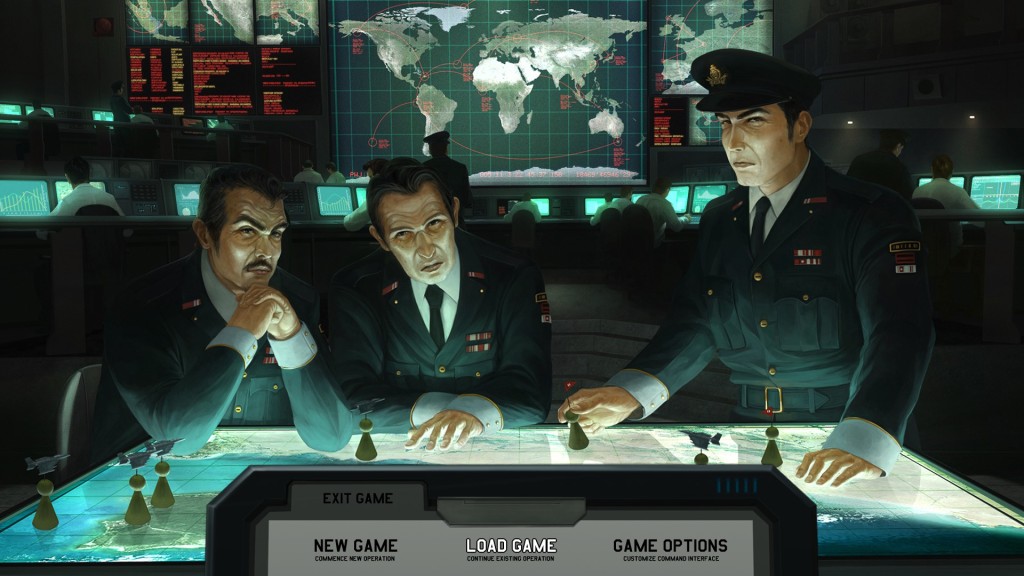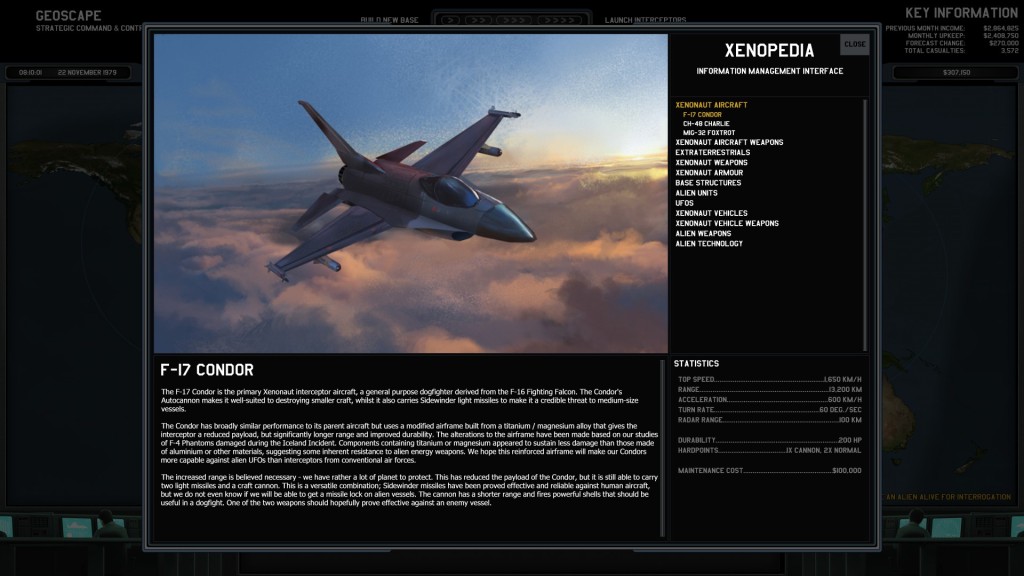Xenonauts is a generally inspired homage to the Gollop Brothers’ X-COM, let down by repetitive ground combat. After six or seven hours back in September, I loaded up Firaxis’ XCOM: Enemy Within… and since then, I’ve haven’t looked back.
Comparing Xenonauts and Enemy Within made me appreciate what Firaxis did right. Because soldiers in Firaxis XCOM can move quite far and still shoot, and because cover, flanking, and line of sight are so important, Firaxis ground combat is extremely fluid. In the very first Enemy Within battle I played after Xenonauts — “just for comparison, then I can write this article” — my soldiers started on one side of a convenience store. First the aliens came from the east, along the street. Then they emerged from the north, through the store, onto my flank! My squad ran, and climbed, and hid on the roof — all but the poor Support trooper who couldn’t make it in time. The aliens emerged from the store. And my survivors took revenge:
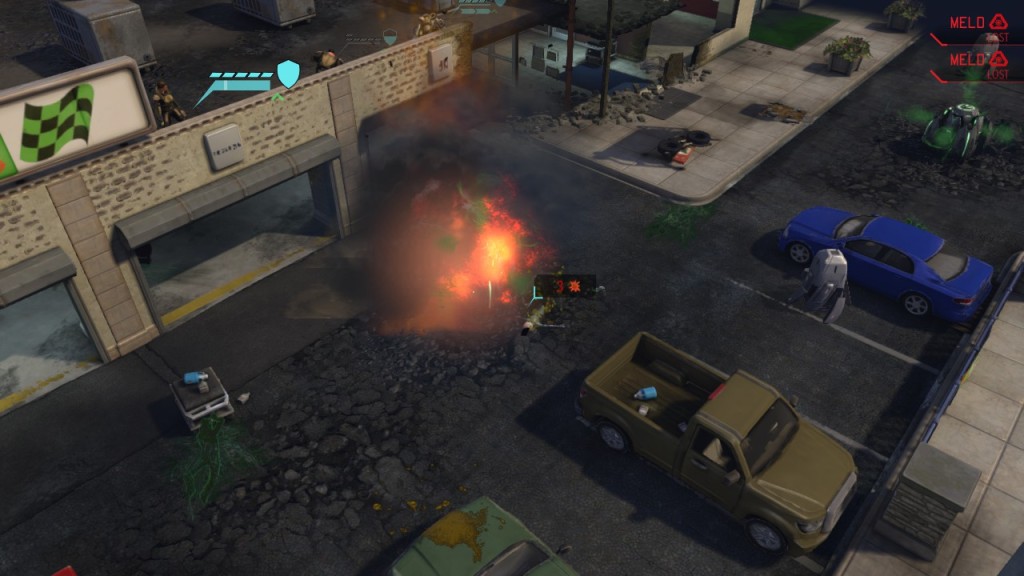 That would not have happened in Xenonauts (nor, from what I recall, in Gollop X-COM), where movement is a slow, plodding affair. With less scope to manoeuvre, firefights became repetitive. And the time it took to cross the map exacerbated a familiar problem with the XCOM franchise – scouring the map for aliens eventually crosses the line from tense to tedious1.
That would not have happened in Xenonauts (nor, from what I recall, in Gollop X-COM), where movement is a slow, plodding affair. With less scope to manoeuvre, firefights became repetitive. And the time it took to cross the map exacerbated a familiar problem with the XCOM franchise – scouring the map for aliens eventually crosses the line from tense to tedious1.
Ironically, Xenonauts is strongest when it carves out its own identity. Here are some of its most striking changes compared to Gollop X-COM (to say nothing of UI and quality of life improvements):
Weapon diversity. Tanks and heavy weapons feel appropriately powerful. For all intents and purposes, a Xenonaut can’t move and fire a machine gun in the same turn (similar to the rocket launcher in Firaxis XCOM). The reason you lug it around is because, once in place, the MG can spit ten bullets in one burst. Like Jagged Alliance 2, Xenonauts tracks each bullet separately, and that makes even the basic MG a killing machine. Vehicles are even more impressive. The starting armoured car can shrug off several hits, and vehicle-mounted rockets and laser cannon obliterated every alien I faced. And there’s more. There’s viable melee — the stun baton is a guaranteed hit. There are multiple types of grenades: frag, knockout gas, flashbang. There’s a shield, which can be combined with grenades, a pistol, or the stun baton. I think I had more fun tinkering with my soldiers’ loadouts than I did in actual combat!
The strategic game, which contains the greatest changes to the Gollop formula. The Gollop economy (until the player’s laser factories were operational) ran like this: successful ground combat -> retrieve loot -> research and sell loot -> better equipment -> successful ground combat. The Xenonauts economy runs off air combat instead — and very soon, the starting Xenonaut interceptors are outclassed. So just as the early months of Firaxis XCOM are a race to deploy satellites, the early months of Xenonauts are a race to expand radar coverage and better interceptors. And just as in Firaxis XCOM, resources are tight – I did not have the money to build all the planes, weapons, and armour on my wish list, which engendered both ‘interesting decisions’ and a sense of struggling against the odds.
A detailed air combat minigame. Even with the risk that this would become tedious, I think I prefer Xenonauts‘ approach to the afterthought that is Firaxis’ air combat. If it does become grindy, there’s always…
Auto-resolves. Air combat can be auto-resolved, and in a way, so can ground combat. Once the Xenonauts down a UFO, click a button and the local air force will bomb the wreckage. This will destroy all loot, and prevents your soldiers from getting experience. On the other hand, the Xenonauts will receive a flat bounty in cash, and you don’t run the risk of losing soldiers (or a precious tank). This is why, as noted above, the Xenonauts economy runs off air combat – every successful Xenonauts interception will bring a reward, whether or not you fight out the ground battle.
The mood, the world, the fiction. This is where Xenonauts really shines. Where Gollop and Firaxis embraced pulp science fiction, Xenonauts is far more grounded. And it makes the most of its limited budget – very good concept art sets the tone.
This is the main menu screen. Don’t the Xenonaut officers look far more serious, far more martial, than XCOM’s Bradford?
The Xenonauts’ equipment is based off real military kit: M-16s, MiG-31s, Chinooks, and more. Here is the starting interceptor, a modified F-16:
My squad includes veterans of actual military units: SEALs, Royal Marines, Fallskarmjagarna, Spetsnaz, Australian SAS, and below, JSDF 1st Airborne:
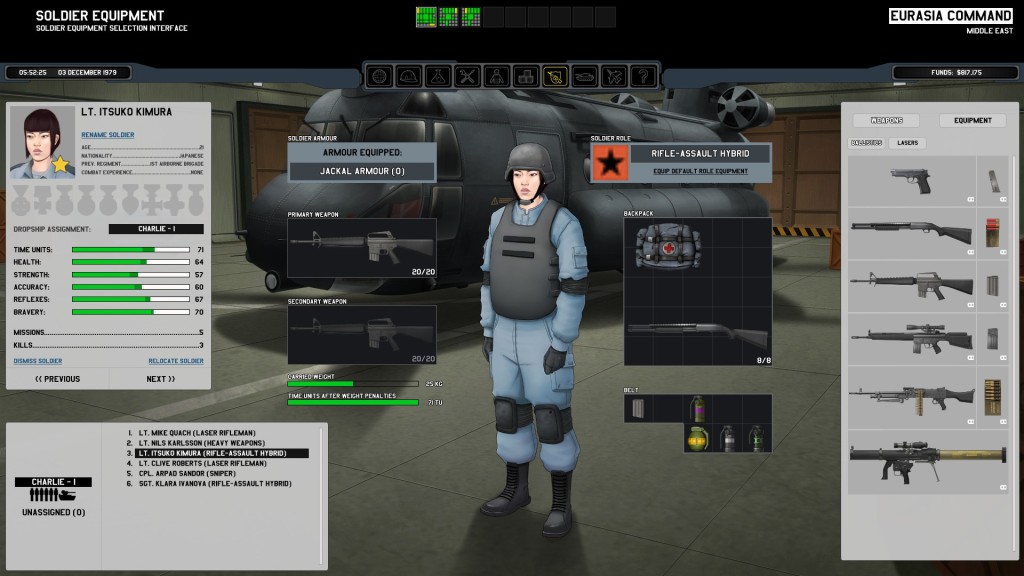 Air battles are depicted in stark wire-frames against a black background:
Air battles are depicted in stark wire-frames against a black background:
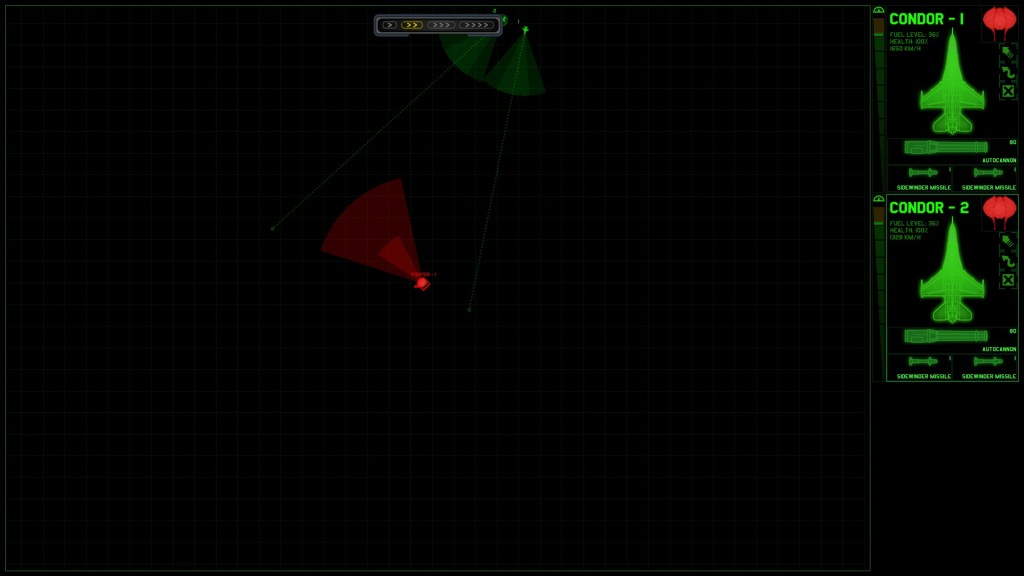 The colours on the world map complement the mood:
The colours on the world map complement the mood:
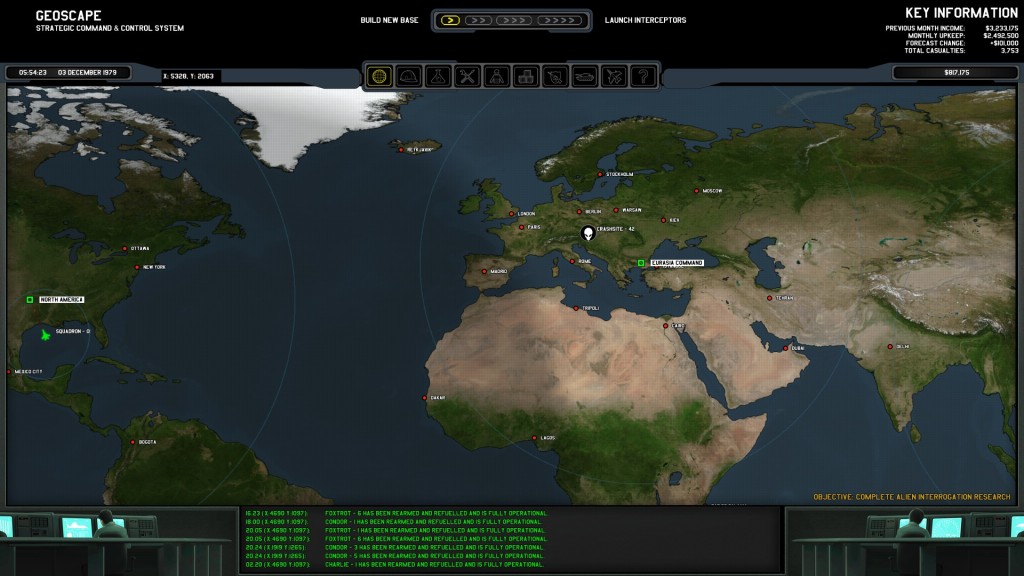 And finally, here is an early piece of fluff text. I love its explanation for why the aliens don’t start off with their biggest UFOs!
And finally, here is an early piece of fluff text. I love its explanation for why the aliens don’t start off with their biggest UFOs!
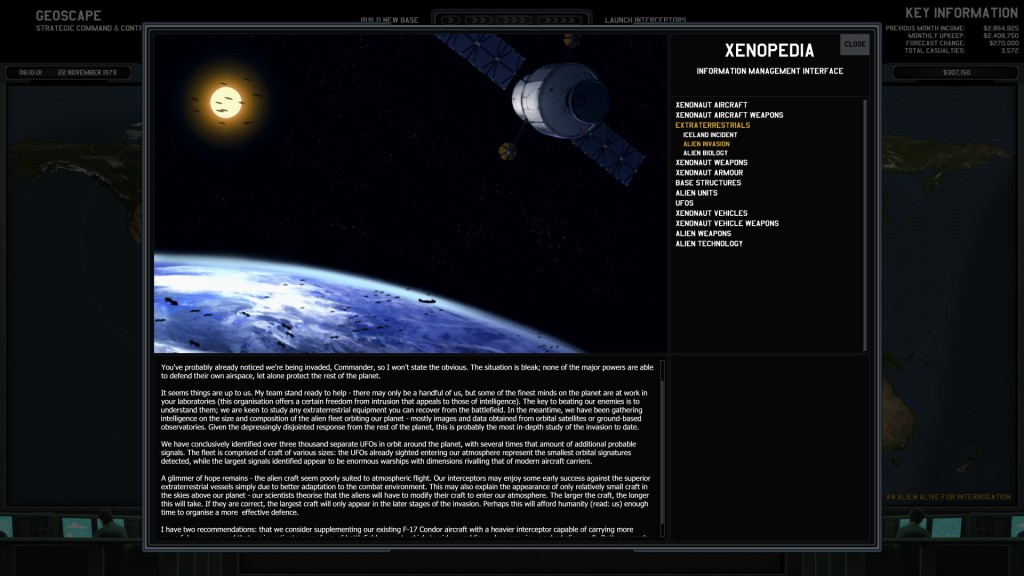 Overall, my dream XCOM game would be a combination of Firaxis’ gameplay, plus Xenonauts’ weapon diversity2, fiction, and possibly air combat. The developers’ next game (see here and here for details) will draw inspiration from a broader pool — Firaxis XCOM, Jagged Alliance 2, and Valkyria Chronicles. After seeing their clever tweaks to the Gollop formula, I look forward to what they do next!
Overall, my dream XCOM game would be a combination of Firaxis’ gameplay, plus Xenonauts’ weapon diversity2, fiction, and possibly air combat. The developers’ next game (see here and here for details) will draw inspiration from a broader pool — Firaxis XCOM, Jagged Alliance 2, and Valkyria Chronicles. After seeing their clever tweaks to the Gollop formula, I look forward to what they do next!

